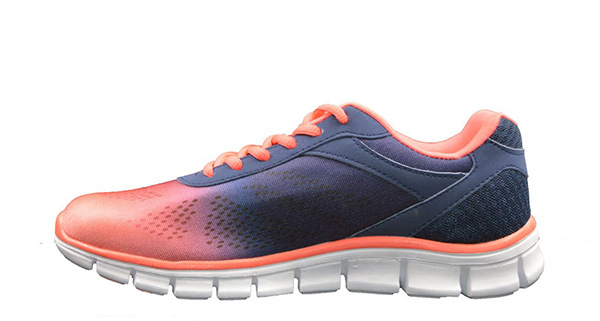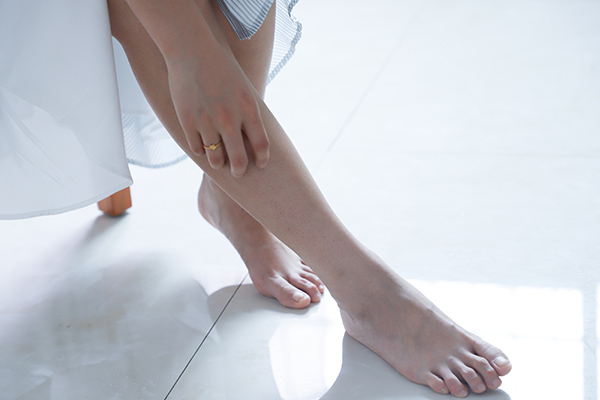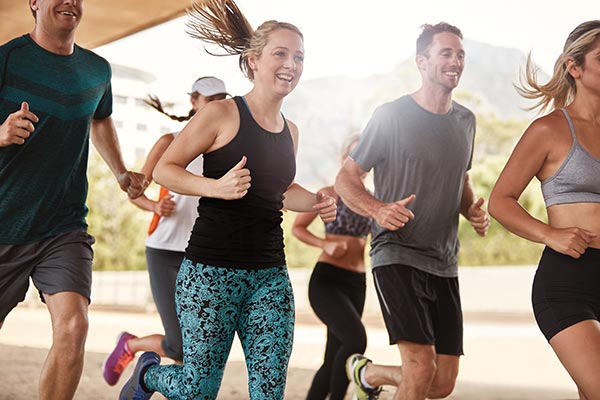Should I run on my toes? Forefoot running vs heel strike: 4 Myths Busted!
Over the last several years there has been a considerable push towards forefoot running or the “barefoot running” technique. In this article we’ll refer to it as forefoot strike vs heel strike. Among my clientele of devout runners I have seen multiple injuries related to attempting to convert to minimalist shoes. I would often ask why they wanted to become forefoot runners suddenly instead of sticking to their natural running pattern. The response is something like, “because it’s better isn’t it?”. So, is it better? Let’s look at the evidence.
Now when I say evidence, we’re talking about published articles in scientific journals. Not from my neighbor, who runs a lot and told me to run this way because it has really helped his 5km parkrun time. However the evidence only goes so far. We will have to make some judgement of our own until further studies are performed.
So what is forefoot running or forefoot strike?
Forefoot running refers to runners that have the ball of the foot as the first point of contact on the ground. This term is relatively synonymous with toe running. I don’t necessarily like that term as we technically don’t run on our toes – we run on the balls of our feet. In forefoot running the heel should stay off the ground through the entire phase of contact. Heel striking runners or rearfoot striking runners make initial contact with the ground with their heel then should proceed forward onto their forefoot as they push off.
Then there are midfoot strikers. They are a confused bunch as they can’t decide whether to land on the heel or forefoot and will mix up how much of a heel strike they have depending on terrain, running speed and shoe type. For the sake of some good scientific discussion we are going to ignore them because technically they can sit in both groups depending on their stride pattern at the time.
The recent evolution of forefoot running
Forefoot running has become very popular recently for several reasons. Many of these are anecdotal rather than scientific. One of the main contributing factors was a very popular book called Born to Run by Christopher McDougall. At this point I should disclose that I haven’t read this book due to my dislike of having to sit still for more than 30 mins at a time. Having said that I am not making my opinions based on what is written in the book, just on scientific evidence available to me.
Around the time that forefoot running became popular there was also some very strong marketing by some of the shoe companies towards minimalist shoes. This probably further perpetuated the hype. Not that it was all bad as some different shoe types and technologies have been developed as a result.

So let’s look at the Myths surrounding forefoot running…
Myth 1: Barefoot running is more natural
The human race evolved without shoes. This kind of makes sense doesn’t it? Why go away from millions of years of evolution by changing our biomechanics of running to suit the habit that we have grown up with such as wearing a shoe. Surely we would be better off running without shoes? Or at least running in the same manner as if we weren’t wearing a shoe?
Does it stack up?
There are a few issues with this theory. The first being that we didn’t evolve over millions of years with concrete. Sadly this is where I do the vast majority of my running due to convenience rather than choice. Most fun runs and races are also held on concrete, roads or other unforgiving surfaces.
Also, do we really run with the same technique bare footed as we do forefoot running with shoes on? Well a study in 2013 showed that in 22 highly trained athletes barefoot running had different kinematics (ie technique) when in a minimalist shoe, a racing flat and a regular running shoe.
Funnily enough the athletes used the same kinematics for all the 3 shoes. This showed that their running technique didn’t change depending on the type of shoe but did change if they were barefooted.
Myth Busted?
So, running in a minimalist shoe isn’t necessarily the same as running barefooted. The main differences were seen in the amount of work being performed by the knee and ankle joints. With barefoot running more pressure was placed on the ankle whereas running with any type of footwear resulted in more work done at the knee joint. Having said that, this was a study on highly trained athletes where obviously they have a very well practiced running technique.
Myth 2: Forefoot strike means you run faster
It is obvious that most elite runners don’t heel strike. But did they become elite because they were good forefoot strikers. Or was this a byproduct? In another study looking at running biomechanics participants were asked to run at varying speeds on a treadmill ranging from 9 km/h to 15 km/h. Step frequency, mechanical work and oxygen consumption were all measured and compared between the forefoot striking group and rearfoot striking group.
What does the research say?
It was observed that in both groups as the speed of the treadmill increased the distance that the runner’s foot was in contact with the ground started to plateau. This was mainly due to anatomical restraints that the body has placed on it such as total available hip extension.
Consequently runners spend less time in contact with the ground as their running speed increases. Or in other words whilst running at higher speeds you spend a greater relative distance in the air. It was concluded that forefoot striking was a necessity rather than a choice for middle distance runners and sprinters. This allowed them to run at greater speeds biomechanically.
Myth Busted?
So in conclusion yes, if you want to run really fast you will have to get up on your toes. But doing so won’t necessarily make you into an elite runner. Essentially if you are training to be a sprinter or fast middle distance runner then you should be forefoot striking, otherwise your maximum speed will be compromised. For the rest of us folks plodding along, there is no evidence to suggest that heel striking is making us slower.
Myth 3: Isn’t forefoot strike more efficient?
Running efficiency is how much energy you use to get from point A to point B. Obviously the more efficiently you do it the less energy is consumed. We can measure this as an oxygen cost to the body. Running up hill or at higher speeds comes at a greater oxygen cost. Very fit runners can metabolise lots of oxygen at any point in time.
Consequently they can cover the same distance faster. If you are less fit you will need to slow down as your oxygen burning capacity may not be as strong. But if you could use less energy (ie become more efficient) then that would mean a decrease in oxygen consumption and you could run faster for free!
Does it stack up?
If we look at oxygen consumption in the same study as above there was no difference at the various speeds between heel striking and forefoot running. From a scientific perspective heel striking or forefoot striking shouldn’t make you any faster or slower over a long run.
Let’s take it one step further. What if you decide you wanted to switch from forefoot to heel striking or vice versa? Well, another study looked at 8 runners who normally rearfoot strike and 8 that forefoot strike. They analysed the biomechanics of when a runner was forced to do the opposite. This study also concluded that there was no mechanical advantage in switching from rearfoot striking to forefoot striking. It is backed up by a similar study basing their results on oxygen consumption rather than biomechanical data. Switching from forefoot striking to rearfoot striking seemed to not make any considerable change to overall efficiency.
Myth Busted?
One interesting point was that the overall work performed ie: pure energy output, was higher in the forefoot strikers in general. This on the surface seems to suggest that forefoot running is less efficient from an energy perspective. The reason it took more pure energy to get from point A to point B forefoot striking was that there was more relative “up and down motion” occurring than in the heel strikers.
This is quite obvious to the naked eye at slow speeds when you get the 2 runners side by side. A rearfoot striker ” shuffles” forwards while the forefoot striker “bounces” up and down. However as discussed above the oxygen costs were the same. It is proposed that the forefoot strikers make up the leftover energy that the oxygen isn’t accounting for by getting a rubber band like recoil effect from the calf muscle and achilles that doesn’t occur as strongly in the rearfoot strikers.
To confuse things further, this study showed that running with shoes was less efficient than barefoot running. This was purely due to the mass of the shoe. However as discussed above, running with any shoe (even a minimalist shoe) isn’t the same as running barefooted.
As discussed above, there was little change in oxygen consumption between the 2 running techniques. What about fuel consumption? Does one type of running burn less carbohydrate and lend itself to longer distances? The short answer is no as found in this study. However this study did tentatively suggest that slightly less carbohydrate is used when running with a rearfoot pattern at slow speeds compared with forefoot running. This occurred only for those runners that had always been rearfoot runners.
Myth 4: Forefoot runners have less injuries
This is probably the most interesting difference between rearfoot striking and forefoot striking.
What does the research say?
In one of the studies we looked at previously there was quite a change between where the forefoot strikers and rearfoot strikers placed their maximal load. Unsurprisingly the forefoot strikers were doing a large amount of work at the ankle joint. Consequently this places higher loads on the calf and achilles musculature.
The rearfoot strikers were doing a relatively larger amount of work at the knee joint. The resultant biomechanics placess more stress on the quadriceps and patellar tendon complex.
Myth Busted?
Since a forefoot striker places more strain through the achilles, someone suffering achilles tendinosis may benefit from spending some time heel striking when initially returning to running. This can decrease the overall load on the achilles. A similar rationale could be used for knee pain sufferers .
They may get some relief from running with a forefoot striking pattern. Having said that, serious care needs to be taken not to replace one injury with another injury by changing running technique. If you do decide to change technique, do it slowly with gradual progressions over several months!
There is another study which showed that forefoot striking was less likely over time to cause an injury to an athlete than a heel striking pattern. However this was a fairly narrow demographic of relatively high level athletes at college in USA. This is also not all that surprising considering that they should be running at speeds where forefoot striking becomes obligatory.
So to answer your burning questions:
Is it faster to run on my toes?
No, not for longer distances at slow to moderate speeds. But it does look pretty. When running faster it becomes very difficult to heel strike.
Will running on my toes make me faster?
No. Neither technique will make you faster over long distances. However when above certain speeds it becomes difficult to heel strike due to the limitations of the body.
Is it more efficient to run on my heels or toes?
Neither. Technically it is more efficient to run the way you have practiced running all these years.
Am I less likely to get injured by forefoot striking?
Only if you are a high level athlete running at high speed. Anecdotally, the most injuries I see related to heel striking or forefoot striking is when someone decides to change from one to the other over a short period of time and ends up with achilles tendonitis or patellofemoral pain. This is backed up by the evidence that shows the different biomechanical loading between both techniques.
Should I change from heel strike to forefoot strike or vice versa?
Only if you have a recurrent injury that is directly related to your running technique.
Happy running!
We currently have a special Free 10 minute assessment or $20 off our full running assessments. You can read about our local, ultra-running star, Kelly-Ann Varey and her running assessment with Simon.


